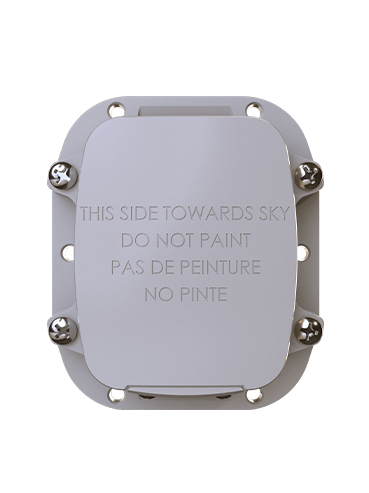Redesigning Private Wireless from the Ground Up?
In previous blog posts, we wrote about the power of private wireless networks to solve real-world problems in manufacturing, warehousing and safety – and the rising challenge of deploying those networks using today’s established technologies and frequencies. That’s why it is time for “capacity fluidity” – a new wireless architecture that overcomes the challenge.
The Incumbent Technologies
Wi-Fi is familiar to almost everyone – commercialized nearly 50 years ago and with 600 million devices in the field. But for mission-critical, high-demand applications, it’s not ideal. Interference among nearby Wi-Fi systems is a real issue that affects performance. Widespread deployment has also given hackers years of experience at penetrating Wi-Fi networks. And if you are covering a wide area, you need roaming capability, where Wi-Fi is weak.
These shortcomings are behind the rising popularity of Citizens Broadband Radio Service (CBRS) 4G/5G cellular for high-demand private networks. Cellular standards make these networks more secure and less vulnerable to interference than Wi-Fi. Like Wi-Fi, the bandwidth is free, but networks must register with the online Spectrum Access System, which gives licensed CBRS users priority. Even when the band is available, the SAS system can disrupt some applications if the wireless link is interrupted to change frequency.
Both technologies are challenged when operating in complex spaces full of radio-absorbing metal structures and machinery. Getting high performance there requires extensive planning of coverage, capacity and interference, which has to be repeated with each significant change to the facility. It is past time for a complete rethink of private wireless networks to make them a reliable, high-performance asset for mission-critical operations.
The New Contender
Standard cellular design calls for many radios spaced so that they form overlapping cells of radio frequency. That has proven its value for public mobile networks. But in dense interior and exterior deployments that require uninterrupted high capacity, the handovers between cells become complicated, and the boundaries between cells generate interference at the edges. These issues can cause user equipment (UEs) to bounce back and forth between cells during a handover or fail to complete the handover at all.
The cell-based design also comes with a built-in disadvantage. When multiple UEs are at work within a single cell, the cell responds by dividing its available bandwidth among them. That’s eminently fair to all concerned – but it means that throughput goes down while latency rises. Meanwhile, adjacent cells may have plenty of available bandwith that is largely going to waste.
A cellular network designed from the ground up for private wireless would take a completely different approach. Instead of many cells, it would consist of a single “supercell” with no handovers, in which all radios transmit to and receive from all UEs at the same time without interfering with each other. It would deliver far greater reliability and would give each UE the potential to access the total capacity of the network, with no congestion in a single cell. The same ideal network would use radio units already available in the market and interface seamlessly with established user devices.
That is the design of XCOM RAN. It uses standard radio remote units (RRUs) that have four transmit and four receive antennas, all independent. They connect to XCOM RAN software compatible with the ORAN and 3GPP standards, and that’s where the magic happens. The software synchronizes and calibrates the connections with the RRUs so that all are transmitting the same information at the same time on the same frequency. Once the system is synched, it exchanges streams of data with every UE, calibrating the parameters for each one separately. Instead of a UE exchanging signals with one of many cells, it receives signals from all RRUs, perfectly synchronized to prevent interference. We call it “capacity fluidity,” because it eliminates the need to plan coverage and capacity cell by cell.
Stop the Noise
The signal-to-noise ratio (SNR) is fundamental to communication technology. It measures the level of a desired signal against the level of background noise. Every network has a noise floor generated by the electronics in the terminals. More noise is typically generated by interference in the same frequency, either from within the network or outside. The more noise in the network, the lower the throughput, which confuses the decoders and generates errors. Errors trigger error correction software, which further reduces throughput. Modems respond by stepping down to a lower modulation to reduce errors, at the cost of still more throughput.
The XCOM RAN design sidesteps this downward spiral. Because all RRUs are transmitting the same stream of data in precise synchronization, interference-generated noise is absent. Because UEs are exchanging traffic with multiple RRUs, signal power is higher than it would be in one of many independent cells. By combining all the signals, XCOM RAN’s SNR is always high: boosting power and eliminating interference combine to achieve high bandwidth. Within that high capacity, XCOM RAN can support 16 independent MIMO (multiple in, multiple out) layers between the UEs and RRUs.
XCOM RAN is in commercial deployment keeping autonomous mobile robots moving in advanced, automated warehouses. It is uniquely suited to such high-demand applications. Its high SNR delivers minimal degradation at the outer edges of each’s RRU’s coverage compared with Wi-Fi or conventional cellular. That provides consistent coverage even across sites with complex metal structures, from warehouses to factories and stadiums.
These are just some of many use cases for a technology that unlocks the true potential of private wireless and takes digital transformation where it has never been able to go before. Learn more about how XCOM RAN can apply to your operational challenges at the Globalstar website.
 SmartOne Solar
SmartOne Solar SmartOne C
SmartOne C ST100
ST100 STX3
STX3 SPOT X
SPOT X SPOT Gen4
SPOT Gen4 SPOT Trace
SPOT Trace